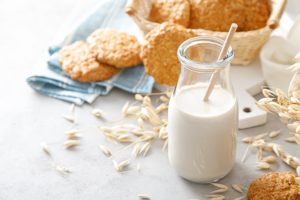Caramelisation: A Flavourful Science
As much as cooking is an art with finely diced vegetables, precise slices, and beautiful presentations, it’s also a science. Sometimes, it’s this facet that gives certain foods a characteristic brown colour to go with a sweet-bitter flavour when heated. We’ll dissect this science to understand the caramelisation reaction and how it applies to people’s beloved dishes and desserts.
A baking ingredients manufacturer can help food manufacturers achieve products with great consistency and flavour—but understanding the nuances of the caramelisation process can offer a clearer idea of how to elevate these products and make some truly sensational creations. Dive into the ‘how’ and ‘what’ of this widely encountered yet often-misunderstood process and learn why the secret behind a perfect crème brûlée isn’t in just the looks.
What is the Caramelisation Reaction?
The caramelisation process can extend to several foods. Simply put, it is the effect of heat on sugars, whether granulated white sugar or those contained in fruits and vegetables. And, no, it isn’t merely melting sugar or changing it into a liquid! The complex process occurs without the help of enzymes or proteins, making it a non-enzymatic reaction.
So, what’s special about this commonly observed but often misunderstood reaction? The flavour profile (brown colour and nutty, somewhat burnt taste that’s simultaneously sweet) is the foundation of numerous desserts, while the reaction itself underpins important developments during cooking. Caramelisation is evident when preparing French fries, sautéing sugar-rich vegetables like onions and carrots, and pan-frying bacon dusted in syrup. The science behind the reaction is complex and not entirely figured out, but we do have an idea of some of the things that transpire when we heat different foods.
The Chemistry Behind the Caramelisation Process
These things pertain primarily to the sugars in food and how they break down under heat. Various sugars begin to caramelise at different temperatures. Fructose does at 110 °C, glucose and sucrose at 160 °C. Once the sugars melt and foam from the heat, they lose water due to condensation. Further dehydration takes place, and the sugars react to create new compounds. After this, aldoses transform into ketoses, leading to fragmentation and polymerisation reactions. The result is large brown molecules (caramelin, caramelen, and caramelan) that give the reaction its signature brown colour and stickiness. Other small, volatile aroma molecules are also obtained. These comprise furan (nutty flavour), maltol (burnt sugar flavour), ethyl acetate (fruity), and diacetyl (buttery flavour). The extent of caramelisation depends on the sugars involved, the temperature, and other variables. It’s important to note the caramelisation reaction mechanism encompasses many simultaneous reactions that haven’t been understood completely. But research is aiming to discover them and demystify the process further.
What we know thus far allows the food industry to create caramel-identical colours and flavours for products, bypassing the need for the caramelisation reaction and the precise monitoring of temperatures and other intricate requirements.
Stages of Caramelisation
The caramelisation reaction of pure sugar can be broken down into the following stages with specific properties:

Caramelisation vs Maillard Reaction

Caramelisation is sometimes confused with another reaction that gives food a similar brown colour. The Maillard reaction is also a non-enzymatic browning reaction, but that’s where the similarity ends. So, what is the difference between the Maillard reaction and caramelisation? For starters, the two involve different underlying chemical processes. Caramelisation is brought upon by pyrolysis, which causes the breakdown of sugars under heat. Caramelisation usually requires a higher temperature threshold to begin.
In the Maillard reaction, a sugar’s carbonyl group reacts with a protein’s amino group or amino acid to produce water and an unstable glycosylamine. Amadori rearrangements (a non-enzymatic carbohydrate modification) on the glycosylamine produce a series of ketosamine compounds. These ketosamines undergo further rearrangements to create several molecules, some aromatic, colourful, and flavourful. (Melanoidins formed are responsible for the colour of foods in this case.) Maillard reactions can be drawn out over time at lower temperatures (ripening of cheese, for example)—but they’re noticeable and quicker in cooking, usually with a temperature threshold of around 140 °C or 150 °C.
While both reactions result in various flavours, those due to caramelisation are more straightforward than the complex notes the Maillard reaction provides. Maillard flavours can be toasty, roast-like, meaty, and even taste like broth. The reaction oversees the browning of meat, the formation of caramel from milk, and the roasting of coffee. It is also responsible for toast and gives beer and popcorn a particular smell and taste.
| Caramelisation | Maillard Reaction |
| Is due to the pyrolysis of sugars | Is due to the reaction of sugars and amino acids |
| Usually requires higher temperatures; depending on the sugars—can be as low as 110 °C and as high as 160 °C | Is noticeable while cooking around 140 °C or 150 °C |
| The flavour obtained is sweet, nutty, and slightly bitter | Diverse, complex flavours are obtained—toasty, roast-like, meaty, and brothy |
| E.g. caramelisation of onions | E.g. roasting of coffee, formation of toast |
Elevate Your Creations With Some Delicious Science

Food science is a fascinating subject, filled with chemical processes that can transform dishes in an instant. The caramelisation reaction is one such approach that can add depth, texture, and visual appeal to savoury dishes and a range of desserts. Manufacturers can better control the outcomes of their products and create delicacies by understanding the science that goes into the reaction and finding ways to achieve the desired flavour profile. Bulk food ingredient suppliers like Symega can help replicate these textures and tastes with food colours, flavours, and culinary solutions that result in safe, innovative products that consumers can trust and enjoy.
From delectable candies to toffee, syrups, nougats, and more, a whole world of food relies on caramelised sugar. Manufacturers can find ways to use it as it is or make confections even better by experimenting with recipes! In a world where flavourists, chefs, and food innovators are searching for distinct combinations and exciting recipes, the answers could lie in a simple chemical reaction.
FAQs
Caramelisation cannot be reversed. The process involves a series of chemical reactions on sugar molecules due to pyrolysis, affecting their physical state thoroughly. The breakdown of sugars forms several new aromatic compounds that are impossible to revert to their original condition.
Caramelisation and the Maillard reaction are both types of non-enzymatic browning. The difference lies in the chemical processes involved. In the Maillard reaction, sugars and amino acids react with each other, forming thousands of compounds, of which a few contribute to diverse food odours and flavours. The Maillard reaction can even occur at room temperature over a period of time, but the optimal temperature occurs at cooking between 140 to 150 °C. Maillard reactions include the browning of meat, the formation of caramel from milk, turning bread to toast, and the roasting of coffee. Caramelisation, on the other hand, involves the breakdown of sugar molecules under heat. The oxidation of sugar results in the production of volatile chemicals, giving a distinct flavour—sweet, nutty, and slightly bitter at once. The flavours obtained here are simpler than the ones the Maillard reaction offers.
Depending on the sugar involved, caramelisation occurs at different temperatures. Fructose caramelises at 110 °C while glucose and sucrose do so at 160 °C.
Foods containing natural sugars can be caramelised for a signature flavour and golden-brown colour. These can range from vegetables like onions, potatoes, and carrots to various fruits like bananas, apples, figs, and peaches. Caramelising these ingredients can lead to great stand-alone appetisers or even delicious sauces and elements for more elaborate dishes.




